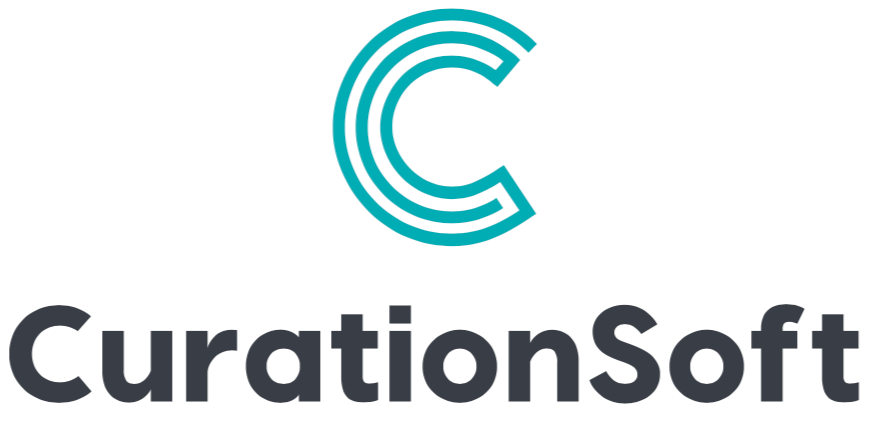Unlock the Power of Content Briefs: A Marketer’s Guide
Content briefs are an essential tool for any marketer. They can help you plan a content strategy, track the success of your campaigns, and even find new opportunities to expand into. But what exactly is a content brief? How do they work, and how should marketers go about creating them?
In this blog post, we will explore these questions in detail by looking at where content briefs are used, some of the best tools available, and discussing what needs to be included when crafting one. We’ll also provide tips on creating content briefs and examine manual versus AI-generated versions. So if you’re looking for more information on how to use this powerful marketing asset, read on!

What is a Content Brief?
A content brief is a document that outlines the purpose, goals, and objectives of a content project. It serves as an agreement between all stakeholders involved in the project to ensure everyone is on the same page and clearly understands what needs to be accomplished.
Content briefs typically include information about the target audience, desired outcomes, timeline, budget, and other relevant details. This helps marketers create effective campaign strategies by providing specific guidelines for content creation.
Where is Content Briefs Used?
They provide clarity and direction to everyone involved in the project so that they can work together toward success.
Content briefs are used in many different industries and contexts. For example, a content brief might be used when launching a new product or service to ensure that all messaging is consistent across all channels. It will also help guide the team on what content should be created and how it should be presented. Content briefs can also be used for website design projects as they help define the site’s goals and guide what types of features need to be included.
In addition, content briefs can also play an essential role in marketing campaigns by helping marketers identify their target audience and create messages that resonate with them. This includes understanding their customers, what motivates them, and how best to reach them through various channels such as email campaigns or social media posts. Content briefs can even include SEO guidelines which help optimize content for search engine rankings so it’s easier for potential customers to find your business online.
Finally, content briefs are also helpful when creating social media campaigns as they guide topics that should be discussed and which platforms should be utilized most effectively based on customer preferences and demographics data analysis results from previous campaigns conducted by your company or competitors within your industry space. This helps marketers to create more effective messages for their target audience and reach them in the right places with the right message.
Content briefs are essential to any content marketing strategy, providing marketers with the clarity and direction to create compelling content. In the next section, we’ll look at some of the best tools for creating and managing content briefs.
Best Content Brief Tools
Content briefs provide a clear outline for the direction and goals of your content, as well as a timeline for when it should be completed. The right tools can make creating and managing content briefs much easier.
Here are some of the most popular tools for creating and managing content briefs:
Trello
Trello is one of the most popular project management tools available today, and it’s great for creating content briefs. It allows you to create boards with tasks that must be completed to reach your goal. You can also assign tasks to team members, set deadlines, add notes or comments, attach files or images, and more.
Asana
Asana is another powerful tool that helps teams collaborate on projects like content briefs. It has features such as task lists, progress tracking charts, timelines for due dates, and reminders so everything runs smoothly. Asana also offers integrations with other popular apps like Dropbox and Slack so you can easily share documents or communicate with teammates while working on your brief.
Google Docs/Sheets/Slides
Google Docs/Sheets/Slides is a suite of applications from Google that makes collaboration easy by allowing multiple people to work on documents at once from anywhere in the world without downloading anything onto their computers first. This makes it perfect for creating collaborative content briefs quickly without worrying about compatibility issues between different devices or operating systems.
Notion
The notion is an all-in-one workspace where you can organize information into databases which are ideal for keeping track of data related to your content briefs, such as keyword research results or analytics reports from previous campaigns. The notion also integrates with other apps like Trello, Evernote, Basecamp, Monday.com, etc., making collaboration easier across platforms.
Evernote
Evernote is another helpful tool when writing a comprehensive brief because it allows users to store text snippets, images, webpages, etc., all in one place, making referencing them later much simpler than if they were scattered around various folders on their computer’s hard drive.
Basecamp
Basecamp provides project management capabilities similar to those found in Trello but adds additional features such as group chat rooms where team members can discuss ideas before adding them to the document. Basecamp also offers integration options, so you don’t have to to manually transfer data between different programs whenever something changes during the creation process.
Using the right content and brief tools can help you create compelling and engaging briefs to help you reach your marketing goals.
How to Find New Content Brief Opportunities?
Creating content briefs requires finding new and relevant topics that your audience will find engaging. Here are some ways to find new content brief opportunities:
Research Industry Trends:
Keep up with industry trends to identify potential topics and ideas for your following content brief. Research what’s popular in your niche or industry to gain insights into the type of information people seek and create relevant content that resonates with them.
Look at Competitors’ Strategies:
Analyze what your competitors are doing to uncover new opportunities for creating content briefs. Take note of their strategies and see if there’s anything they’re doing that could be improved upon or expanded on by your own team.
Customer Feedback & Surveys:
Tap into customer feedback to find new ideas for creating content briefs. Look through customer reviews, surveys, emails, and social media posts – whatever data points you have available – to understand what customers want from your brand regarding the information they receive from you.
Brainstorming Sessions:
Gather key organizational stakeholders with different perspectives on the topic and hold brainstorming sessions to generate fresh ideas for new briefs.
By utilizing these four methods, marketers can find a variety of options for brainstorming topics and ideas for their next round of content briefs. Researching industry trends, analyzing competitor strategies, gathering customer feedback, or having brainstorming sessions internally can help marketers create meaningful pieces that meet their goals and those of their target audience.
Exploring new content brief opportunities can help you create fresh, engaging content for your audience. The next section will examine what should be included in a content brief.
What Should a Content Brief Include
When creating a content brief, it is essential to include key elements to help you craft a comprehensive plan for success. These elements will guide the entire content creation process from start to finish.
Article Title
The article title is the first element to include in a content brief. It should be descriptive and attention-grabbing to entice readers to engage with your content.
Subtitles or Headers
In addition to the article title, subtitles or headers should be included for each section of your article. This helps to break up the text and make it easier for readers to digest the information quickly.
Target Audience
Specifying the target audience is crucial as it determines how you write and structure your content and which topics you cover in more detail. It is essential to consider which funnel stage the article falls under awareness, consideration, or conversion.
Synopsis of the Article
Providing a synopsis of the article gives readers an overview of what to expect. The length of the summary can range from one sentence to a few paragraphs, depending on the complexity of the topic.
Calls-to-Action (CTAs)
Including CTAs in your content brief is vital as it tells readers what action to take after reading the article. Examples include signing up for an email list or downloading an ebook related to the topic discussed in the report.
Details and Research Links
Word count and research links should also be included in the content brief. These details can save time during the research process, helping to streamline content creation.
Guidelines and Deadlines
To keep everyone on track throughout the production process of writing, editing, and publishing, provide guidelines and deadlines for keyword research, outline creation, first draft submission, and other tasks. This ensures that everything stays on schedule and the project is completed efficiently.
Manual Content Brief Vs. AI-generated Content Briefs
They provide a framework for the project, outlining objectives and expectations while also guiding how to achieve them. But when it comes to creating these briefs, there is a choice between manual or AI-generated approaches.
Manual content briefs require more time and effort but offer greater control over handling each project element. This includes everything from research and keyword selection to copywriting, design, and promotion. It also allows marketers to tailor their approach based on their target audience’s needs and preferences and the desired outcomes of the campaign.
On the other hand, AI-generated content briefs are faster but may only sometimes produce results that meet expectations due to their automation. These tools use algorithms that can quickly generate ideas for topics, keywords, titles, etc.; however, they need more human insight, which can be invaluable in crafting effective campaigns tailored specifically for your target audience.
When deciding which approach works best for you, it is essential to consider both cost-effectiveness and quality assurance. Manual briefs will take longer but offer more control. In contrast, AI-generated ones may save time but will only necessarily guarantee success with your goals if used correctly and monitored closely enough during the implementation stages. Ultimately, it depends on what type of project you are working on and which approach would best suit your needs to achieve success with your goals.
FAQs to Content Briefs
Conclusion
In conclusion, content briefs are an essential tool for marketers to ensure their campaigns succeed. Content briefs provide a structure and guidance for the creation of compelling content. They should include critical elements such as audience, goals, objectives, timeline, and budget. The best tools to create content briefs are manual methods or AI-generated options, depending on your needs. With the proper research and understanding of your target audience, you can find new opportunities to create content briefs to help you reach your marketing goals.
Are you looking for a way to create SEO-friendly and compelling content to drive leads? CurationSoft can help. Our powerful software lets you quickly curate content from multiple sources, ensuring your site has the latest and most relevant information. With automated keyword optimization, our platform allows search engines like Google, Bing, and Yahoo see your website. Take control of your online presence today with CurationSoft!






